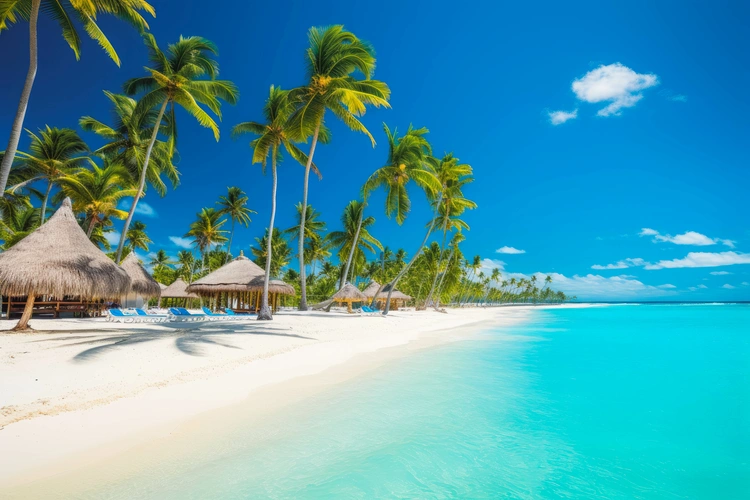Europe’s Last Frontier
In the Great Age of Discovery, ships went forth from Europe to the far reaches of the earth, bringing back...
Read more
Lief Simon is the managing editor of Global Property Advisor, Simon Letter, and Offshore Living Letter. He has purchased more than 45 properties, investing in 23 different countries around the world.

The Dominican Republic is connected to both the United States and Europe with many direct and non-stop flights. There are eight international airports, the busiest ones in Punta Cana, Santo Domingo, Santiago and Puerto Plata.
Most importantly, all the major U.S. carriers offers service from their hubs, including discount carriers such as Spirit, JetBlue and Frontier. From Europe, British Airways, Air Berlin, Swiss Air and Iberia offer direct flights.
All visitors need a tourist card to enter the Dominican Republic for a maximum of 60 days.
However, these are generally acquired at the airport on arrival for a fee of US$10 (cash only).
For tourists entering the Dominican Republic, passports must be valid at least until the date of departure; for all others, passports must be valid for at least six months.
Relatively comfortable and inexpensive buses connect the major Dominican cities. Santo Domingo and Santiago are the main hubs, with two main companies — Caribe Tours and Metro — offering service to the Cibao, the Samana Peninsula, Barahona, and the entire north coast.
For example, Caribe Tours offer advance reservations online, but most travelers simply show up and take the next bus headed in the direction they want to go.
Fares are extremely cheap (as little as RD$350 for a cross-country trip), and most of the major long-haul buses are air-conditioned and equipped with toilets.
Adventurous travelers can avail themselves of the informal network of guagas that cross-cross nearly every square inch of the country.
On the other hand, don’t expect much in the way of comfort, as the rundown minivans are often crammed to the gills with people, luggage and even livestock.
Catching a guagua is as simple as standing by the side of the road and waving as one passes.
The cobrador hanging his head out the door (assuming it has a door) will shove you into whatever space he can find and take your fare after the van gets underway again.
As a foreigner, expect to be overcharged. And, if in doubt about the fare, ask one of your fellow passengers the correct amount.
Car rentals are widely available, but expensive. Gas prices are exceptionally high.
Regardless of whether your credit card offers insurance coverage with the rental, it is often advisable to opt for local insurance as it will significantly ease the hassles if you are involved in an accident.
In short, take special care to note of any dents or scratches on the car before you set out. The main roads are generally good (including a newish toll road between the capital and Samana), but deteriorate rapidly once you get off the trunks.
The North Coast around Puerto Plata is one of the principal destinations for independent travelers.
Resorts are peppered around the main towns throughout the region, the beaches are attractive with amber sand and the water is clean though not quite the turquoise blue that many travelers come to expect of the Caribbean.
Apart from Puerto Plata, the principal tourist towns on the North Coast are Sosua, once a refuge for Jews escaping Nazi Germany and now a somewhat seedy center of sex-tourism, and Cabarete, the kite-surfing capital of the Caribbean.
The Samana peninsula, on the northeast tip of the island reachable via a decent road from Puerto Plata, is justifiably touted as one of the loveliest spots in the Caribbean.
The area has developed significantly in the past couple of decades, but visitors will still find unspoiled beaches, coconut tree-covered mountains, tropical rain forests, and internationally known whale-watching.
Aside from the village of Samana itself, when you’re planning to travel in the Dominican Republic, consider the former fishing village of Las Terrenas.
Above all, it has become a popular destination for both visitors and those seeking sunny climes in which to put down roots — especially Europeans.
South of Samana on the east coast of the Dominican Republic is Punta Cana, now littered with all-inclusive resorts run by most of the major players in U.S. and European hospitality industry.
There are now more than 55 resorts in the Punta Cana region.
Bavaro Beach, Macao Beach, and Uvero Alto beaches are the most famous spots.
The South Coast of the island is still relatively quiet compared to the North Coast.
La Romana and Bayahibe are known for spectacular sunsets over the water and crystal-clear waters away from the main population centers.
Offshore islands worth a visit include Catalina and Saona. The faux colonial village of Altos de Chavon sits on a bluff overlooking the Chavon river and is not far from the most luxe resort development on the island, Casa de Campo, built in the 1970s by the Gulf + Western company and famous worldwide for its championship golf courses.
The capital, Santo Domingo, is by far the island’s largest city and its political and economic center.
Four- and five-star hotels, cultural amenities, and a vibrant night life set it apart from some of the quieter corners of the Dominican Republic. The colonial central is the main attraction for visiting tourists.
Changes in seasons in the Dominican Republic means changes in rainfall patterns as opposed to changes in temperature.
The rainy season for the north coast runs from November to January; for the rest of the country, rain falls more regularly between May and November.
In the Great Age of Discovery, ships went forth from Europe to the far reaches of the earth, bringing back...
Read moreIn the Great Age of Discovery, ships went forth from Europe to the far reaches of the earth, bringing back...
Read more"I've had enough of your Caribbean vacations for this year!" This is the response Bill Piatt got from his wife...
Read moreThe best countries for Canadians to retire to are mostly well-known to Canadians. Expats can be found, usually close to the beach, in all the countries we mention here. Ask most of them why they moved and you will usually hear two main reasons. The first is the weather. Lots of Canadians choose a part-time retirement in the sun to escape the brutal winters. Leaving before the first snow and returning after the thaw has set in allows you to...
Read more
© 2008 - 2024 Live and Invest Overseas - All Rights Reserved.
Sign up to receive the FREE daily e-letter, Overseas Opportunity Letter and we’ll immediately email you our editors’ latest research report…
RETIRE OVERSEAS AND LIVE LIKE ROYALTY
© 2008 - 2024 Live and Invest Overseas - All Rights Reserved.